8 Low-Maintenance Landscaping Ideas for Sacramento, CA
BY LAUREN BRYANT | MAY 9TH, 2023 | CALIFORNIA, LAWN CARE, SACRAMENTOYou want a beautiful yard, but must it be so much work? Planting, fertilizing, mowing, weeding, watering — all those tasks add up. If you want to spend less of your free time caring for your yard and more time enjoying it, reconsider your landscape design. These low-maintenance landscaping ideas for Sacramento could save you time and money in the long run.
In this article, we’ll cover:
- 8 Landscaping Ideas for Sacramento
- FAQ About Low-Maintenance Landscaping in Sacramento
- How a Pro Can Help
8 Landscaping Ideas for Sacramento
1. Create a Xeriscape
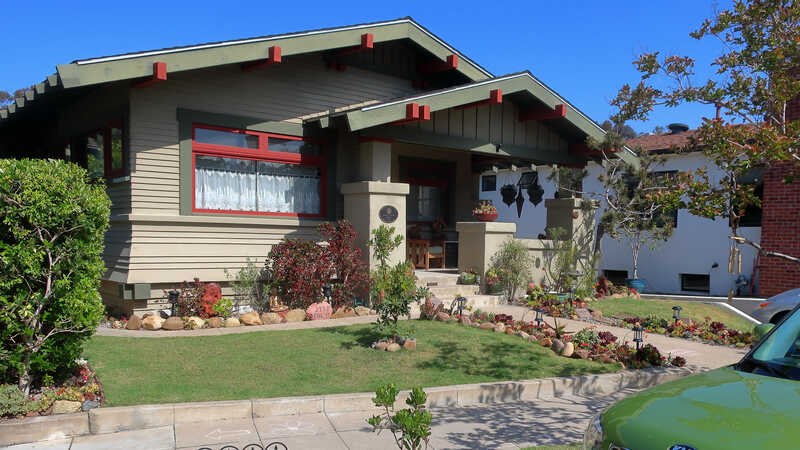
Photo Credit: cultivar413 / Flickr / CC BY 2.0
Xeriscaping is a landscape design requiring little to no water or maintenance. It’s best for arid climates, so it fits Sacramento’s hot summers well. Here are some standard features of a xeriscape:
- Drought-tolerant plants: Succulents and cacti are popular choices, but the Fair Oaks Horticulture Center recommends several other water-efficient plants like desert willow, California honeysuckle, and lovegrass.
- Lawn replacement: Remove turfgrass and replace it with mulch, rocks, soil, or drought-tolerant groundcovers.
- Efficient irrigation: Get rid of inefficient sprinklers and replace them with drip irrigation or soaker hoses.
- Hydrozones: Hydrozoning means grouping plants with similar water needs next to each other. It helps save water, prevent over or underwatering, and makes it easier to remember how much irrigation each part of your yard needs.
Not only is xeriscaping popular in the area, but the City of Sacramento offers rebates of up to $3,000 for replacing your lawn with drought-tolerant landscaping.
Not ready to completely redo your yard? Consider taking smaller steps by following a few of our other low-maintenance landscaping suggestions.
Advantages:
- Eco-friendly
- Reduces water usage
- Saves money long-term
- May be eligible for a rebate
Estimated Cost: Xeriscape installation costs between $5 and $20 per square foot.
2. Use Native and Drought-Tolerant Plants
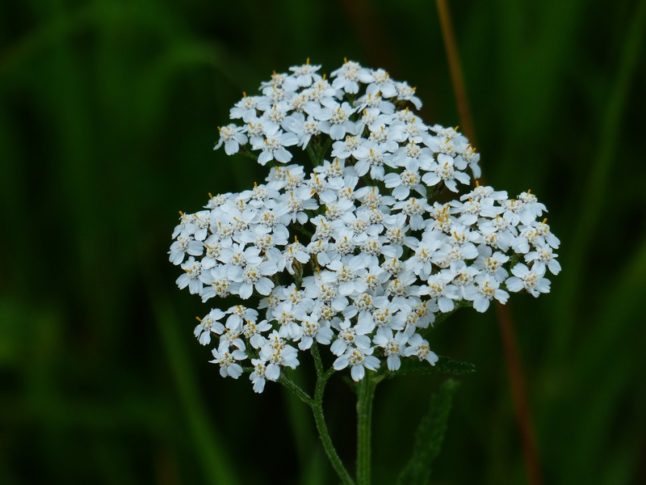
Common yarrow
Photo Credit: Pxhere
If your garden plants aren’t native to the area, they’ll take much more work to care for. Native plants are well-adapted to the local climate and soil conditions. After all, these plants have thrived in the valley for years without human intervention. Since native plants are usually drought-tolerant, you can use them to create a more eco-friendly landscape.
Remember that not all California native plants will do well in Northern California. Here are some plants that are native to the Sacramento area specifically:
- Common yarrow (Achillea millefolium)
- California buckeye (Aesculus californica)
- Showy milkweed (Asclepias speciosa)
- Coyote bush (Baccharis pilularis)
- California buttonbush (Cephalanthus occidentalis)
- California Fuchsia (Epilobium canum)
- California poppy (Eschscholzia californica)
- Coffeeberry (Frangula californica)
- Blue field Gilia (Gilia capitata)
Want to preview some plants before you buy any? Visit the UC Davis Arboretum or the Fair Oaks Horticulture Center to view plants in person.
Advantages:
- More likely to be drought-resistant and adapted to the soil
- Eco-friendly
- Pollinator-friendly
Estimated Cost: Depending on the species, individual plants can cost between $3 and $125. Trees and shrubs tend to cost more than groundcovers, grasses, and flowers.
3. Prioritize Perennials
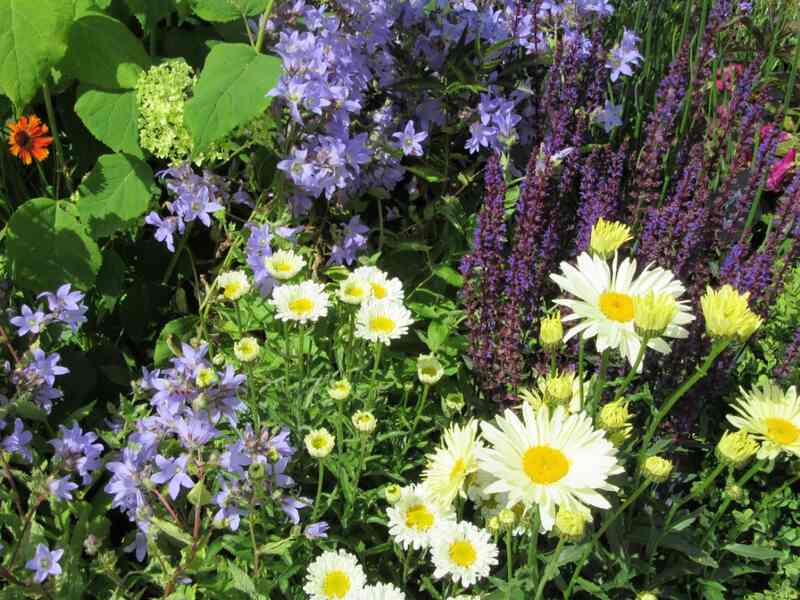
Photo Credit: Colicmachon / Canva Pro / License
It’s no fun to plant a beautiful flower only for it to disappear in a year. Save yourself this annoyance by choosing perennials instead of annuals.
Annuals tend to have a long blooming season but only live for one growing season before dying. Some annuals reseed themselves, but it isn’t a guarantee. On the other hand, perennials live for multiple years, with some lasting decades. Plant perennials if you don’t want to redo your garden yearly. Some perennials that do well in Sacramento include:
- Common yarrow (Achillea millefolium)
- Showy milkweed (Asclepias speciosa)
- California Fuchsia (Epilobium canum)
- California poppy (Eschscholzia californica)
- Great Valley gumweed (Grindelia camporum)
Advantages:
- Add colorful flowers to your yard
- Don’t need replanting each year
- Can last a few decades
Estimated Cost: Perennials can cost between $0.95 and $45 per plant, depending on the species.
4. Use Groundcovers Instead of Grass
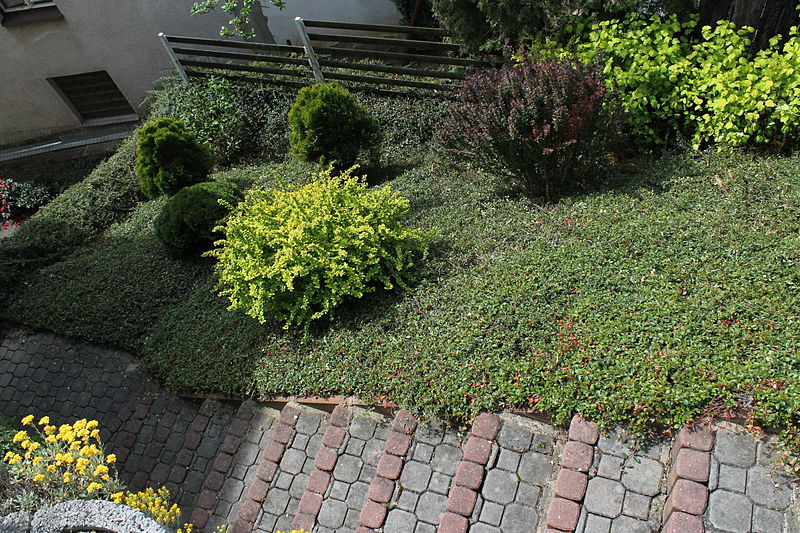
Photo credit: I.Sáček, senior / Wikimedia Commons / CC0 1.0
Though many grass types are well-adapted to Sacramento’s climate, they require frequent maintenance. That’s where groundcovers come in.
Groundcovers are any plants that can cover large areas of soil. They typically require less water than turfgrass, and you can trade in weekly mowing for the occasional trim. Not only do these plants make great replacements for your lawn, but they also protect from erosion and drought.
When selecting a groundcover, consider how much you plan to walk on it. Some are traffic-tolerant, but others are best for curb appeal only.
Here are some groundcovers you could use to replace your Sacramento lawn:
- Catlin’s giant (Ajuga reptans)
- California buckwheat (Eriogonum fasciculatum)
- Prostrate rosemary (Rosmarinus officinalis)
- White stonecrop (Sedum album)
- Georgia blue speedwell (Veronica umbrosa)
Advantages:
- No mowing
- Erosion control
- Low water needs compared to turfgrass
Estimated Cost: Groundcovers cost between $3 and $30.
5. Replace Your Lawn with Artificial Turf
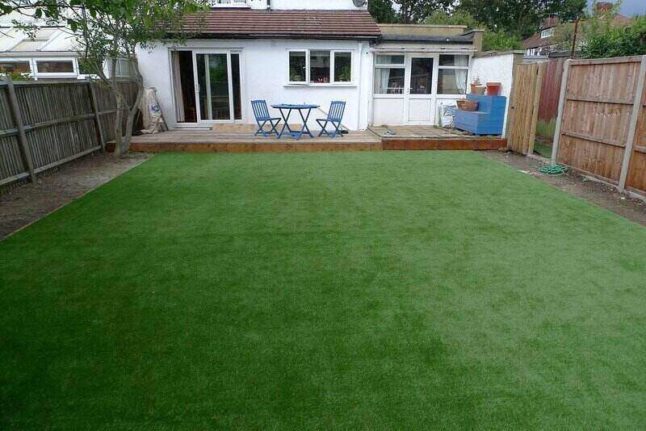
Artificial turf
Photo credit: Perfect Grass / Flickr / CC BY 2.0
If you’re too attached to lawns to switch to groundcovers, consider artificial turf instead. Artificial turf is made of synthetic fibers. You may have seen it on local school sports fields or in the UC Davis Health Stadium.
Artificial turf requires no mowing, watering, or fertilizing — the only maintenance it needs is the occasional rinsing to get rid of debris and brushing to get rid of matted sections. Once installed, it can last between 10 and 20 years. You can replace any damaged portions as needed, and you won’t need to spike your water bill to establish it like natural grass.
However, studies have found that artificial turf gets hotter than grass. This turf also isn’t eligible for the City of Sacramento’s grass conversion rebate.
Advantages:
- Saves water
- Requires no mowing or fertilization
- Stays green year-round
- Lasts for 10 to 20 years
- Damaged portions are easy to replace
Estimated Cost: Artificial turf costs between $4 and $15 per square foot. You may be able to purchase used artificial turf at a lower price.
6. Spread Mulch
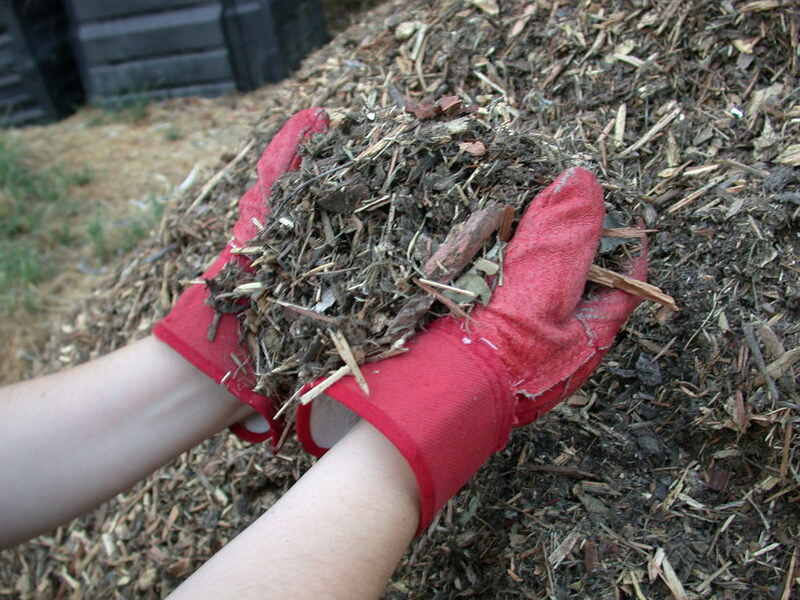
Photo Credit: Dvortygirl / Wikimedia Commons / CC BY-SA 3.0
Mulch is a practical tool for low-maintenance landscapes. It comes in many organic and inorganic forms, including:
- Bark
- Cocoa hulls
- Compost
- Grass clippings
- Gravel
- Leaves
- Pine needles
- Rubber mulch
- Stones or rocks
- Straw
- Wood chips
Besides adding aesthetic appeal, mulch has many practical uses. It suppresses weeds, regulates temperature, and reduces water evaporation. Organic mulches also provide nutrients to your plants as they break down over time. However, they will need replacement every year or two, so use inorganic mulch if you want even less yard work.
Advantages:
- Visually appealing
- Several options to choose from
- Suppresses weeds and aggressively growing garden plants
- Regulates soil temperature
- Improves the soil’s water retention
- Organic mulches enrich the soil when they break down
Estimated Cost: Depending on the type of mulch, expect to pay between $37 and $131 per cubic yard. You can save money by applying it yourself. Bags cost around $2 to $7 each.
7. Use Efficient Irrigation Systems
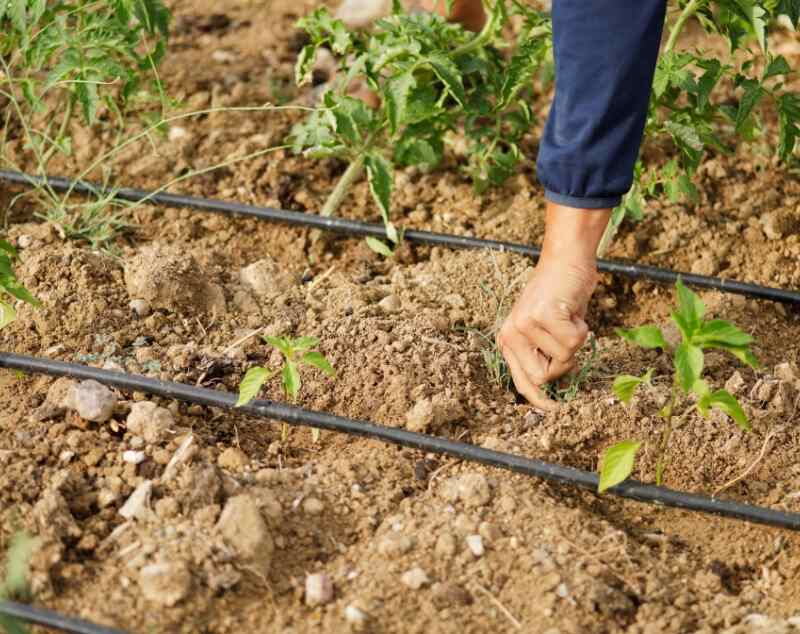
Photo Credit: Temmuzcan / Canva Pro / License
Watering can be a chore, especially when you need to follow the city’s watering schedule. What if you forget and miss your scheduled window?
Automated sprinklers are an obvious solution, but even they have their problems. For example, you must turn them off when it’s raining so they don’t waste water. A sprinkler with a rain sensor can automatically turn off when it detects precipitation, so you won’t need to worry about checking the weather and adjusting your settings.
If you’re bothered by wasted water, consider drip irrigation or soaker hoses. They ensure water goes precisely where needed rather than nurturing weeds or evaporating on your patio. You can attach a timer to either system, so you won’t need to think about turning it off.
Advantages:
- Saves water
- Timers and rain sensors turn irrigation off automatically without you lifting a finger
- Drip irrigation and soaker hoses deliver water precisely
Estimated Cost: A sprinkler system costs between $575 and $6,100. Rain sensors add $30 to $500 depending on whether you install them yourself or hire a pro. Drip irrigation costs between $1.20 and $3.85 per square foot. You can buy a soaker hose kit for $8 to $60.
8. Install Hardscapes
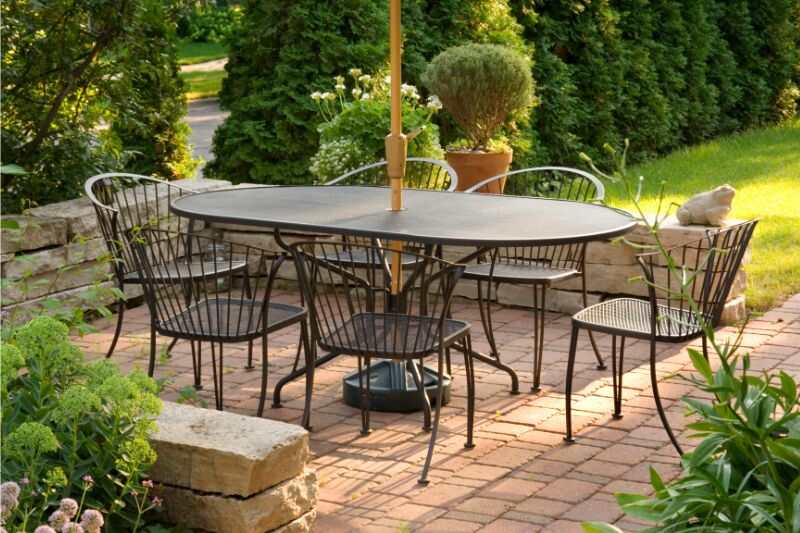
Photo Credit: YinYang / Canva Pro / License
To make your yard lower maintenance, convert some or all of it to hardscaping. A hardscape design utilizes walkways, patios, retaining walls, and outdoor kitchens. Not only is hardscaping low-maintenance, but it also creates an excellent space for outdoor hosting. You can use a variety of materials, including:
- Bricks
- Pavers
- Wood
- Stones
- Rocks
- Gravel
- Concrete
- Cement
- Asphalt
The more hardscaping you have, the less yard work you’ll need to do. You only need to clean it off occasionally and replace broken parts. Hardscapes also can improve your home’s fire safety, especially if they cover the 5-foot perimeter around your home.
Advantages:
- The only maintenance is cleaning and broken part replacement
- Great for hosting outdoor events
- Improves fire safety
Estimated Cost: Simple hardscaping projects can cost as little as $300, while complex projects can cost up to $100,000.
FAQ About Low-Maintenance Landscaping in Sacramento
A xeriscape landscape design minimizes water use but still uses plants. A zeroscape uses no plants. For example, it may use dirt, gravel, and stones to create visual interest and prevent plants from growing.
It’s much more daunting to deal with a large space. While all landscaping requires some maintenance, the best way to reduce maintenance needs for a large property is to:
● Use plenty of hardscaping. A large patio with space for a dining table, seating, and a fire pit will give you plenty to do outdoors and reduce space for weeds and high-maintenance plants to spread.
● Plant native, drought-tolerant vegetation. Groundcovers will go a long way toward covering large areas.
● Automate what you can. Watering large areas with a hose can be tedious and inefficient, so opt for sprinklers, drip irrigation, or soaker hoses.
Gravel is one of the cheapest ways to transform your yard into its lower-maintenance self. It’s easy to find in stores and spread yourself. The only downside is that it’s heavy. Gravel costs around $20 to $190 per cubic yard.
Of course, anything you can do yourself will save you money. Want to have a low-maintenance garden? Go to the nursery yourself, dig up your old plants, and plant your new ones in their place. Irrigation systems and artificial turf are relatively easy to install yourself and will cost much less when DIYed than hiring a pro.
How a Pro Can Help
You may want a low-maintenance landscape to free up more time. However, transforming your yard by yourself could take several weekends. Hire local pros to tackle this landscaping project for you. They can listen to your needs and give design suggestions to bring your ideas to life.
Do you want to keep certain high-maintenance landscaping features? A professional can help with that, too. They can mow your lawn, fertilize your plants, and replant your favorite annuals. The greater Sacramento area is home to all kinds of landscaping pros who can meet any needs you may have.
Main Image Credit: Pxhere